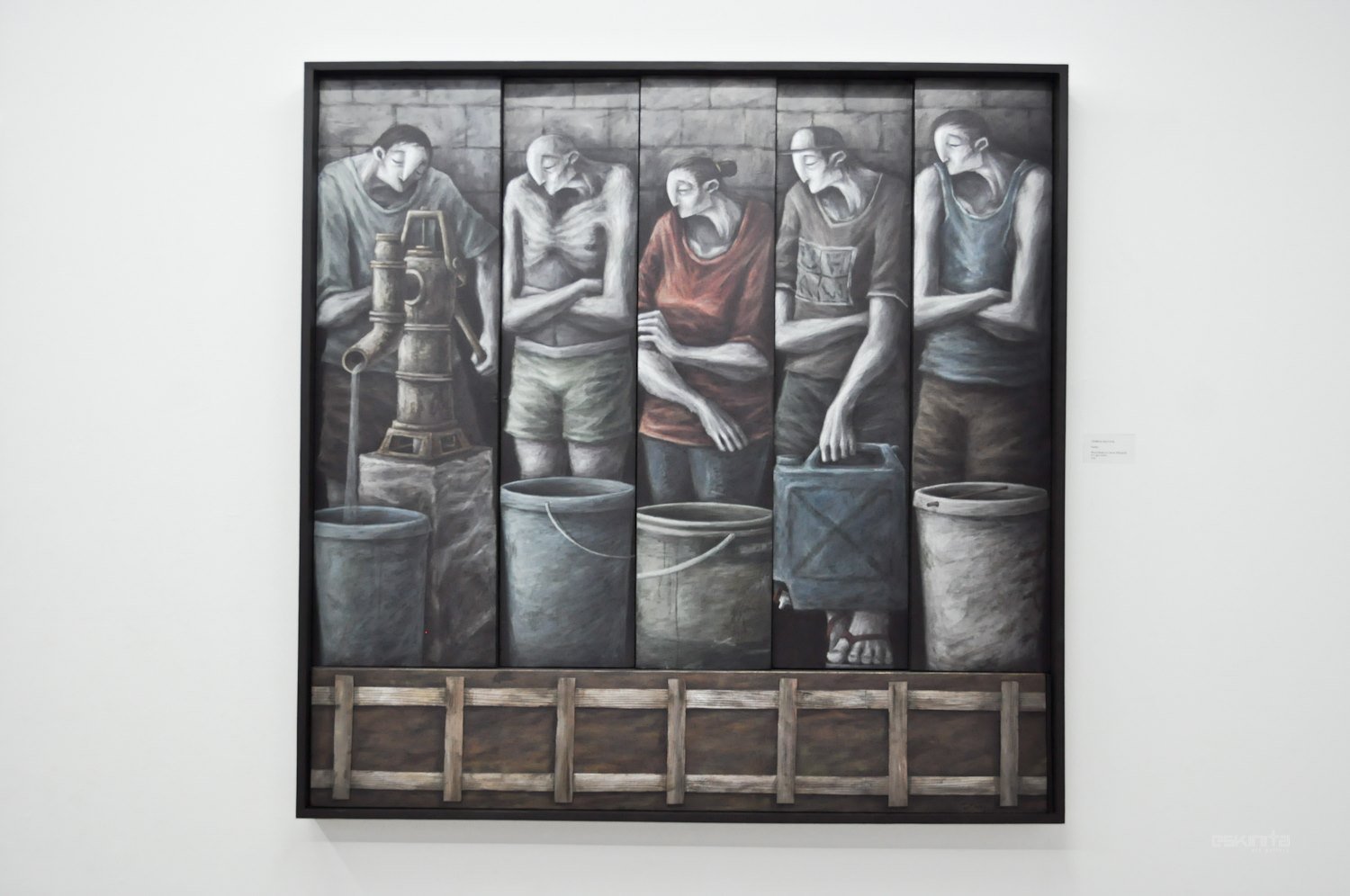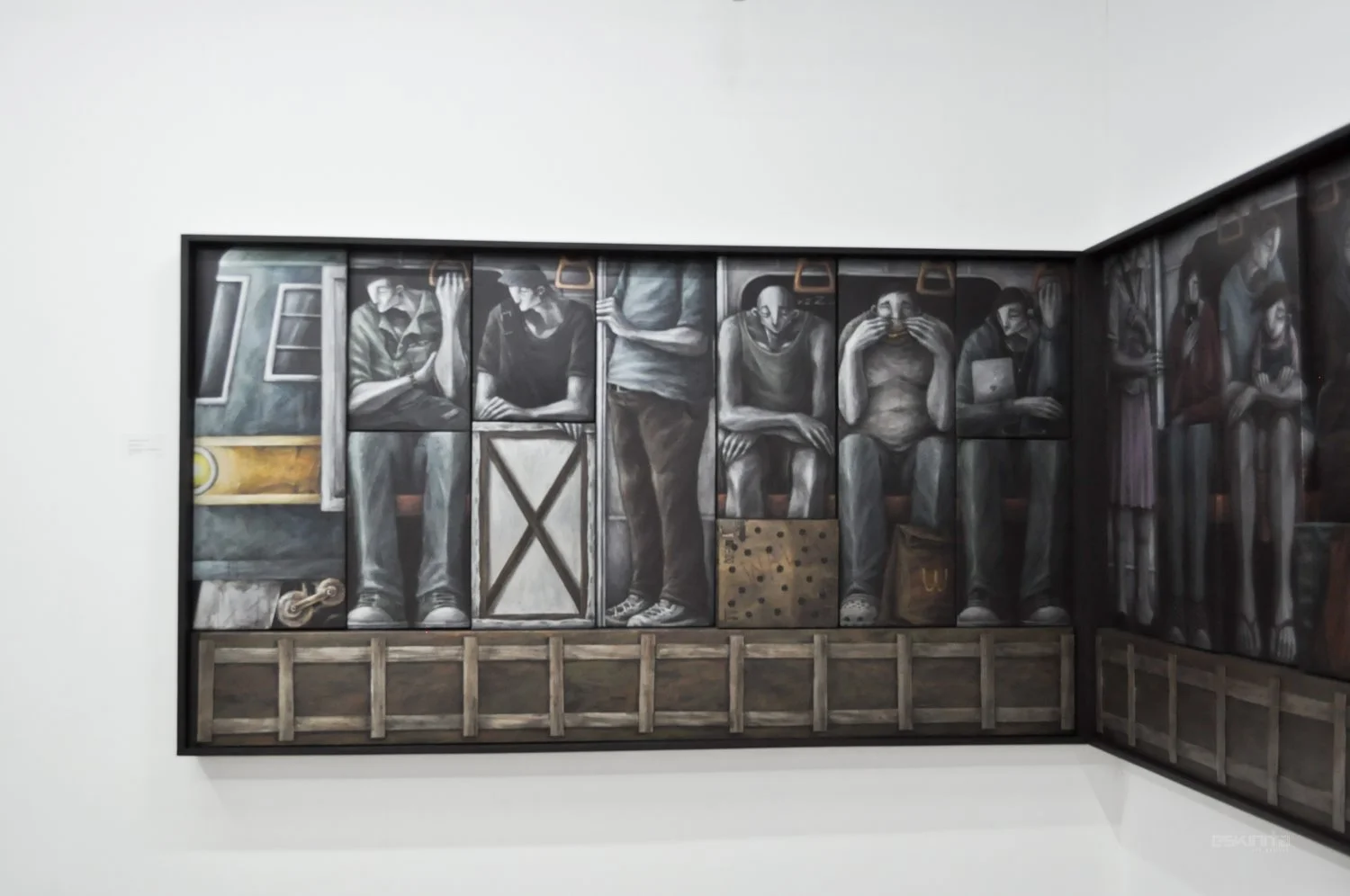
Roundtrip
Cedrick Dela Paz
October 26 to November 19, 2019
Roundtrip is a scenario that occurs by the railroad – it is a journey that is to and fro. Like a train with fastened compartments, the artworks are interconnected with one another. Each work endeavors its viewers to partake in the journey of a regular Filipino, and compels one to be in the scenario itself.








In a work called “Suplay,” Dela Paz recounts the misfortune caused by the lack of water supply—a crisis that was well apparent not so long ago in Metro Manila. Here Dela Paz lays out the truth, and the faces of the people encountering such societal issue. In the work called “Implasyon,” Dela Paz puts forward the effect of inflation on poor people – or essentially, who are most vulnerable to these economic complications. Here we see a scenario of a wet market filled with goods that seem to be unsalable because of inflation. “Estasyon” displays the commuter’s hardships – how commuting tests one’s patience faced with dilemmas on whether he’ll actually be able to get a ride or if he’ll get to where he needs to be on time. On a more concentrated perspective, “Twenti?” is a piece that tells a story of a young boy figuring out where to spend his twenty peso allowance. Here, Dela Paz attempts to narrate the life of some students in public schools and the challenge to sustain themselves with that they have.
“Sana Palarin” is inspired by a recent report that petitions to shut down lotto outlets in the country. Here Dela Paz reveals the people’s dismay and embezzled hope. “Ang bote ng Ginebra sa Bawat Problema” is a piece that is a forthright display of negative vices among common people – how they use these vices to escape problems with temporal pleasures.
Dela Paz aims to chronicle the hardships of common Filipinos, and their way of coping. The exhibit portrays people’s survival, the cycle of their everyday life, and their struggle to live. He puts his audiences in environment of poverty and the culture that it creates. He urges his audiences to attempt how to be one with these people, see their vices and their attempts for escape and wonder: what other choice can they make?
“Papunta-pauwi A & Papunta-pauwi B” speaks about the commuters’ travel in a city that function 24/7. Dela Paz portrays a scenario of encounter – the kind that meets one person with the other – an avenue for an exchange of stories. “Byaheng Mabuti o Masama, Saan ka Bababa?” heeds a call for one’s moral imperative – how one always has to make the decision to do something right, and how the uncomplicated question seems to be complicated because of a dire need or stumbles. In these works, Dela Paz attempts to balance the dichotomy of interconnectedness and individual detachment.
Each of the works in the exhibit is a polyptych, and each part manifests an individual subject, which highlights one’s story. Enclosed in each canvas are the people we are compelled to see exactly how he or she appears to be. This urges the audiences to confer great importance to an individual and allow him to appear with infinite respect through infinite attention – a choice to see the face of the other. Inspired by Larry Alcala’s “Slice of Life,” Dela Paz attempts to balance the character’s vibrant nature by giving emphasis to the unifying societal ties that distinctly connect one’s life to the other.
“Roundtrip” essentially concludes the journey and reveals its prime architect – the person who built their narrative all together. It should now be made apparent why the artist chose his subjects for this particular journey. He wanted to give voice to those who couldn’t speak for their own. He made sure that the narratives are personal, but he also made sure that they’re relatable precisely because they are commonplace and precisely because they are real. This last stop then reveals how at the end of all this, we will always go back to our own, and how our next stop depends on the direction we want it to lead to.
-Karen Tesalona

